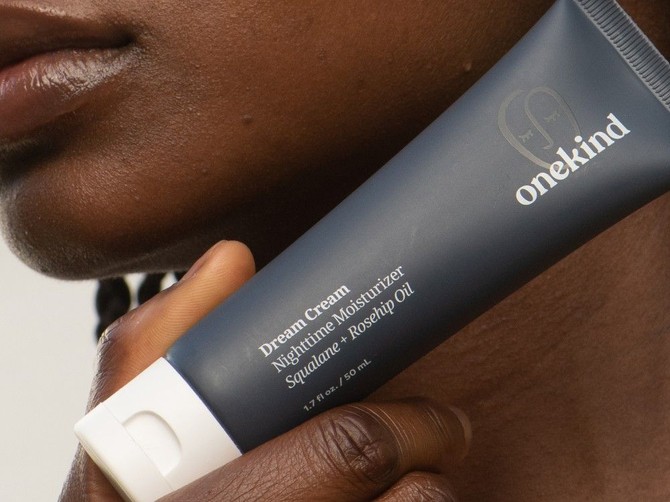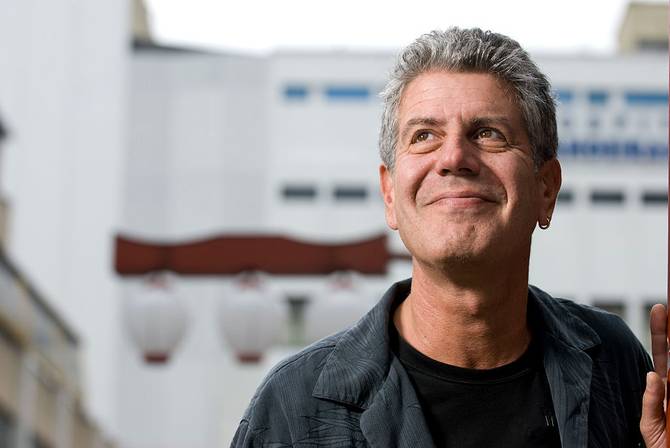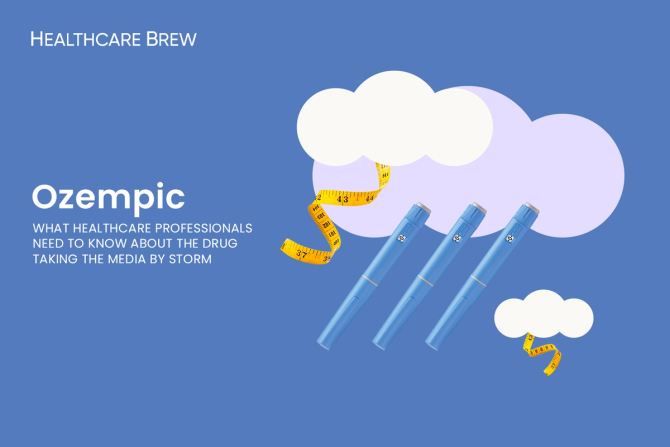| | | | | |  The summer solstice at Stonehenge. Andrew Matthews/PA Images via Getty Images | | | The wackiest headlines from the week as they would appear in a Classifieds section. Careers THE NEXT ANNA SOROKIN: Taking "dine and dash" to a whole new level, an Indian man was recently discovered to have lived in a five-star hotel in Delhi for 603 days without paying a dime. Now that he got caught, he owes ~$70,000. DINO HUNTER: Three individuals were charged with stealing a velociraptor statue outside a Sioux Falls, SD, museum. When asked why they did it, they said they wanted to see if Night at the Museum worked anywhere. Personal NO TRAITORS: The ancient Roman temple complex where Julius Caesar was assassinated has been opened to the public. Someone please post a thirst trap with the caption: "Et tu, Boot-ay?" LOST—ALMONDY TREAT: Another freezer section staple has been laid to rest. Good Humor's Toasted Almond bar was discontinued last year, and fans are just finding out as they stumble into their local gas station and dig for the dessert. For sale PERFORMANCE ENHANCING DRUGS: At a psychedelics conference in Denver, QB Aaron Rodgers credited ayahuasca for reviving his career after a down season in 2019. "The previous year, 26 touchdowns, four interceptions. We had a good season. Ayahuasca, 48 touchdowns, five interceptions, MVP," he said. PHALLIC KNIFE SHARPENER: Archaeologists believe medieval armies used a stone shaped like male genitalia to sharpen swords during battle. Could be a great addition to any rustic kitchen today.—MM | | | | | Attention all night owls and beauty sleep seekers! Did you know your skin loses essential moisture overnight? Well, here's an extra-dreamy fix—a FREE full-size night cream  . . Say hello (or good evening) to Onekind. Their results-driven Dream Cream helps your skin seriously repair while you snooze. Its plant-based formula of squalane and rosehip oil will work its magic and leave your skin brighter, smoother, and deeply hydrated. With a calming blend of chamomile, lavender, and rose, this stuff is a rejuvenating garden party for your face—and it's made for all skin types and ages. For a limited time, you can get it for *free* with code BREW. All you gotta pay is S&H. Get dewy. | | | | Spencer Platt/Getty Images A pooch perfectly executes Upward Facing Dog on International Yoga Day in Times Square, NYC. | | | ![Hey Arnold saying]() Hey Arnold!/Paramount Global Hey Arnold!/Paramount Global Here are some illuminating scientific discoveries from the week to help you live better and maybe even stare at some pigeons.  Every peanut's dancing in the Modelo. Move over, Mentos: There's another snack doing weird stuff in fizzy drinks—and it might help scientists better understand what's going on below the Earth's surface. When dropped into beer, peanuts float up and down in a "dance" coordinated by carbonation bubbles, which stick to the nuts, buoy them to the surface, and then pop, a process that happens repeatedly. Researchers are carefully studying the specifics of this phenomenon to learn more about why certain minerals in magma rise higher in the Earth's crust than expected: They think it might be the work of gas bubbles. Every peanut's dancing in the Modelo. Move over, Mentos: There's another snack doing weird stuff in fizzy drinks—and it might help scientists better understand what's going on below the Earth's surface. When dropped into beer, peanuts float up and down in a "dance" coordinated by carbonation bubbles, which stick to the nuts, buoy them to the surface, and then pop, a process that happens repeatedly. Researchers are carefully studying the specifics of this phenomenon to learn more about why certain minerals in magma rise higher in the Earth's crust than expected: They think it might be the work of gas bubbles.
 Water usage made the Earth tilt. We've moved so much water in two decades that the planet has shifted at least 30 inches off its axis. People are not about to fall out of orbit or anything, but one researcher is "concerned and surprised" that we displaced 5.5 million Empire State Buildings' worth of groundwater between 1993 and 2010. It's because the water we pump from underground aquifers for irrigation and other activities mostly ends up in the ocean instead of going back into the ground, which causes a pretty big weight redistribution. This pumping has also added 6.24 millimeters to sea levels, which have risen by 10 centimeters since 1992. Water usage made the Earth tilt. We've moved so much water in two decades that the planet has shifted at least 30 inches off its axis. People are not about to fall out of orbit or anything, but one researcher is "concerned and surprised" that we displaced 5.5 million Empire State Buildings' worth of groundwater between 1993 and 2010. It's because the water we pump from underground aquifers for irrigation and other activities mostly ends up in the ocean instead of going back into the ground, which causes a pretty big weight redistribution. This pumping has also added 6.24 millimeters to sea levels, which have risen by 10 centimeters since 1992.
 Call to birding. Do you see birds in your everyday life and want to recapture the thrill of your middle school science fair? The New York Times wants YOU! Whether you know the names of different kinds of hawks or still giggle at the words blue-footed booby, you can sign up to participate in what the NYT is calling its first citizen science project to help build out the Cornell Lab of Ornithology's public bird database on two apps, Merlin (for newbies), and eBird (for experienced birders). Participants will receive weekly prompts and activities throughout the summer, like trying to identify a species by its call, and the NYT plans to hold free birding events and keep everyone updated on what they learn from the data.—ML Call to birding. Do you see birds in your everyday life and want to recapture the thrill of your middle school science fair? The New York Times wants YOU! Whether you know the names of different kinds of hawks or still giggle at the words blue-footed booby, you can sign up to participate in what the NYT is calling its first citizen science project to help build out the Cornell Lab of Ornithology's public bird database on two apps, Merlin (for newbies), and eBird (for experienced birders). Participants will receive weekly prompts and activities throughout the summer, like trying to identify a species by its call, and the NYT plans to hold free birding events and keep everyone updated on what they learn from the data.—ML
| | | | | | Time for some binge-worthy gems. Wanna watch award-winning docs about science, nature, history, technology, music, food, you name it? Curiosity Stream's got it all, aaand Morning Brew readers get 25% off. You'll never get bored—content drops every single week to satisfy all your curious cravings. Start watching. | | | | SpongeBob Squarepants/Paramount Global via Giphy Entering a time machine to stock up on household essentials at early 2021 prices often seems like the only way to escape the budget-busting inflation of the past two years. But do things really have to be this way? Companies have been saying "Yes." Ever since inflation began skyrocketing, firms have claimed that they must raise prices due to higher costs for inputs like labor, raw materials, and energy. Tack on production slowdowns, clogged ports, and the war in Ukraine, and things were all but guaranteed to get more expensive. Most analysts agreed, adding that government Covid stimmies and lockdown-era savings left many consumers flush with cash and more willing to pay. But a group of renegade scholars has pointed to a different culprit for our collective sticker shock: rising corporate profits. They argue companies use global disruptions as an excuse to hit consumers with heftier price tags to boost their bottom line. In other words: "greedflation." In recent months, as some corporations kept raising prices even as their costs stabilized, more economists wondered whether the greedflation camp might be onto something. So, let's take a look at what they have to say. The "inflation is a choice" argument One major promoter of the so-called seller's inflation theory is University of Massachusetts Amherst economist Isabella Weber, who points out that corporate profits have grown since inflation began to accelerate in late 2021. She blames the concentration of market power within a few companies for allowing them to get away with profit-boosting price hikes. In the past couple of years, S&P 500 companies have indeed expanded their earnings margins to levels unseen in the last three decades (though they've been declining recently), according to Bloomberg. And Weber's once-unorthodox take went mainstream this year, as consumer giants like PepsiCo and Procter & Gamble reported that they kept jacking prices beyond any growth in their costs. There's also evidence that swelling corporate profits were partly responsible for sparking the price surge two years ago: Researchers at the Kansas City Fed recently found that corporate profits could account for almost 60% of inflation in 2021. But, according to NPR, the lead author on the study, Andrew Glover, doesn't believe that companies were raising prices to gouge customers. Instead, they were doing it in anticipation of their costs going up in the future. What's the solution? Weber argues that hiking interest rates is not the best way to lower the cost of living since it entails people losing their jobs and hobbling much-needed housing construction. Instead, she advocates for government price controls on key goods like energy and taxes on windfall profits to disincentivize price increases. Some European governments have stepped in to cap company profits and ensure that essentials stay affordable for consumers. The French government recently reached a deal with 75 food manufacturers to lower prices after their raw materials costs declined. Meanwhile, Italian consumers are taking matters into their own hands: Activists are staging a week-long pasta boycott to protest alleged profiteering. But…critics of selective price controls say price ceilings can cause shortages by diminishing the potential reward for companies that supply in-demand goods and services. And most US economists agree that even in the fight against profit-driven inflation, the most effective tool is still good ol' interest rate hikes.—SK | | |  Meal prep: Go bananas! This easy recipe for oatmeal chocolate chip cookies features dried fruit. Meal prep: Go bananas! This easy recipe for oatmeal chocolate chip cookies features dried fruit.
 Book rec: A Living Remedy is a stunning memoir of grief from best-selling author Nicole Chung. Book rec: A Living Remedy is a stunning memoir of grief from best-selling author Nicole Chung.
 Playlist: From music tastemaker Kens, check these songs that add a little bit of spice to any sweet playlist. Playlist: From music tastemaker Kens, check these songs that add a little bit of spice to any sweet playlist.
 Stream: Get ready to be enraptored—er, enraptured—by NYC birder Christian Cooper's new series, Extraordinary Birder. Stream: Get ready to be enraptored—er, enraptured—by NYC birder Christian Cooper's new series, Extraordinary Birder.
 Art rec: It doesn't matter if you're Team Vanderpump or Team Rinna—this print from Lyne Lucien's shop would look great next to Ramona's pinot grigio. Art rec: It doesn't matter if you're Team Vanderpump or Team Rinna—this print from Lyne Lucien's shop would look great next to Ramona's pinot grigio.
 Podcast: Trying to make new friends as an adult is more awkward than a seventh grade dance. Life Kit has tips to help. Podcast: Trying to make new friends as an adult is more awkward than a seventh grade dance. Life Kit has tips to help.
 Come for the vibes: Rock both your worlds with Tenuto 2, the only doctor-recommended FDA Class II vibrator clinically proven to combat ED—and designed for powerful, 2-person pleasure. Brew readers save 20%.* Come for the vibes: Rock both your worlds with Tenuto 2, the only doctor-recommended FDA Class II vibrator clinically proven to combat ED—and designed for powerful, 2-person pleasure. Brew readers save 20%.*
*This is sponsored advertising content. | | | Paulo Fridman/Corbis via Getty Images It's a big world out there. In this section, we'll teleport you to an interesting location—and hopefully give you travel ideas in the process. After the chef, writer, and TV host Anthony Bourdain died in 2018, his friends announced that June 25—his birthday—would be known as "Bourdain Day." To celebrate, we're going to take you on a global tour of some of his favorite restaurants. Ganbara, San Sebastián, Spain. Tucked away on the northern coast of Spain lies a foodie paradise: San Sebastián has the most Michelin-starred restaurants per capita than any other place in the world, according to the Guardian. When in San Sebastián, Bourdain would always return to Ganbara, a bar serving "pintxos," the Basque country version of tapas. Bourdain was a big fan of the seared mushrooms, but the entire menu will make you drool. Joe's Kansas City BBQ, Kansas City, MO. Called Oklahoma Joe's Barbecue back when Bourdain visited, this spot aces the classics—burnt ends, pulled pork, and ribs—leading Bourdain to crown it the "best BBQ in Kansas City, which makes it the best BBQ in the world." Bún Bò Huế Kim Chau, Huế, Vietnam. Come here for the "greatest soup in the world," Bourdain declared. Located in a market in the former imperial capital of Huế, this stall delivers a knockout bone broth soup packed with fragrant spices, noodles, and every kind of meat you can think of (including pig's foot, blood cake, and beef shank). Overall, Bourdain was in love with Vietnam, which is where he dined with Barack Obama. Osteria dal 1931, Rome, Italy. At this off-the-beaten-path restaurant in Italy's capital, a plate of prosciutto and artichokes moved Bourdain to utter one of his most famous lines: "I love this place. I want to die here already, and I might yet." That quote is immortalized in a tribute to Bourdain on the restaurant's wall, alongside photos of Italian celebs from yesteryear. This old-school place was founded in 1931, after all, and the prices look pretty cheap! Sukiyabashi Jiro, Tokyo, Japan. If you're wondering whether the restaurant featured in the documentary Jiro Dreams of Sushi is all it's (not) cooked up to be, Bourdain says it is. He called it "maybe" the best sushi on Earth and said it would ruin the cuisine for you if you eat it anywhere else. The good news? Sushi won't be ruined for you because you're probably not going to get in: Sukiyabashi Jiro has stopped taking public reservations, meaning diners can only grab one of the 10 seats through connections or a hotel concierge.—NF | | | Last week we asked: What mascot needs its own birthday meal and what would the meal be? Here are our favorite responses: - "Easily the Philadelphia Flyers mascot, Gritty. It would be a full cup of ghost pepper hot sauce, and that's it. Maybe a McDonald's Sprite too. Just something to entirely unravel you."—Thomas from CT
- "Arizona State University Sun Devil, Sparky. Breakfast is huevos rancheros with hot salsa, a side of Flamin' Hot Cheetos, and a jalapeno bloody mary."—Sally from Peoria, AZ
- "Definitely the Aflac duck! It would be a medium-rare steak, Caesar salad, berry tart for dessert, and a pinot grigio, obv."—Alessandra from Jacksonville, FL
- "Gritty. A smoothie of raw eggs and the crust that gets stuck on a snowplow. He washes it down with pure rubbing alcohol."—Galen from Washington, DC
- "Slugger, the tobacco worm of the Wilson Tobs in the Coastal Plains summer league, deserves a birthday with a glass of Wild Turkey bourbon neat, medium-rare filet mignon, roasted sweet potatoes, and a fine Monte Cristo cigar afterward."—James from Wilson, NC
This week's question We are in the thick of music festival season. The Foo Fighters made a surprise appearance at Glastonbury, a bunch of people on shrooms are wandering around Double JJ Ranch in Michigan as you read this, and teens from the Chicago suburbs are preparing to bury their alcohol in Grant Park. So, what is the strangest thing (rated no higher than PG-13) that you've witnessed at a music festival? Molly's answer to get the juices flowing: "I saw a guy in a blowup unicorn suit breakdance-rollerblading at Kilby Block Party in Salt Lake City, UT." Share your response here. | | | | | | |  Ozempic is Hollywood's latest weight loss secret, and everyone is catching on. Here's what medical providers need to know about the new "it" drug. Ozempic is Hollywood's latest weight loss secret, and everyone is catching on. Here's what medical providers need to know about the new "it" drug.
 How can you take your startup from ground zero to mission ready? Check out how space innovators navigate partnerships with the Air Force, SpaceX, and VCs. How can you take your startup from ground zero to mission ready? Check out how space innovators navigate partnerships with the Air Force, SpaceX, and VCs.
 Getting to know your audience will help you scale your company. Join Tech Brew and Gather AI's CEO on June 28 to learn how to get it done. Sign up today. Getting to know your audience will help you scale your company. Join Tech Brew and Gather AI's CEO on June 28 to learn how to get it done. Sign up today.
|  | |















No comments:
Post a Comment